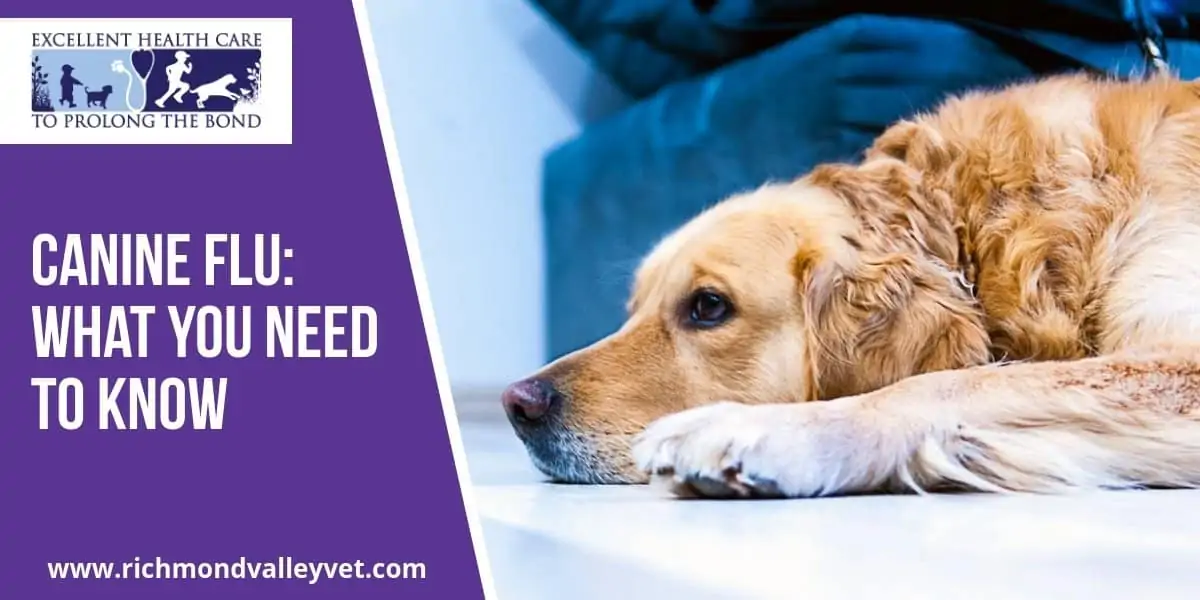
Canine influenza or dog flu is a contagious disease in dogs which affects the respiratory system. The type A influenza virus also known as canine influenza virus is responsible for canine flu. The influenza virus can be distinguished into two:
- H3N8
- H3N2 virus
The virus was initially identified in Florida in 2004 and the dogs that are affected by this virus are known to develop two types of syndromes.
The mild symptoms include coughing and nasal discharge. The mild symptom will last no longer than a month and will go away on its own.
The severe symptoms are characterized by a high fever accompanied by pneumonia. The virus can affect the blood capillaries, which can cause the dog to vomit blood in addition to exhibiting breathing difficulties.
Symptoms of canine flu
Some of the main symptoms of canine flue are listed below:
- A cough
- A runny nose accompanied with sneezing
- Fever and lethargy
- Red eye with discharge
- Anorexia
- Reduced appetite
Preventive/safety tips against canine influenza
Vaccination: currently, there is a vaccination that will help your pooch from one virus that causes canine influenza. Unfortunately, we do not have a vaccination against the newer virus strain. However, clinical trials are in process and we expect a complete vaccination in the near future.
We recommend that you vaccinate your dog against canine flu every year. The vaccination can also minimize the severity of the disease in addition to keeping your dog safe from it.
Maintain personal hygiene of your dog
It is recommended that you maintain the personal hygiene of your dog. Groom him at least once or twice a month till the flu season is over. Since canine flu is contagious, it always ideal to stay away from grooming clinics or similar services. If you want to resort to such clinics, ensure that they are reputed and use separate leashes or muzzles for your dog. Grooming your dog at home is fairly simple if you know some tips and have some time to invest.
Beware of other dogs
Since canine flu can easily spread from one dog to another, it is ideal to limit your dog from engaging with other dogs until the flu season is over. Additionally, you should take special care to ensure that you wash your cloth and hands after interacting with other dogs. This will prevent you from passing the culprit virus unintentionally to your pooch after you have engaged with another dog.
Seek veterinary assistance
If you suspect that your dog is infected with the flu and the symptoms seem to be at large with no signs of subsiding, it is better to seek veterinary help quickly. Even when there is no exact treatment or cure for the condition, a veterinarian can ensure that everything is under control and assist in making your pooch’s recovery a smooth one.
Canine flu virus rarely affects people, however, they can act as a good carrier for this virus to spread from one dog to another. Canine flu based mortalities in dogs are a rarity, however, your dog can be susceptible to long terms side effects like a compromised immune system.
